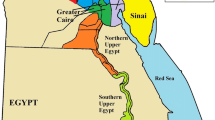Abstract
We isolated and characterized a total of 41 polymorphic microsatellite loci in Crassostrea hongkongensis, an oyster restricted to southern China. Loci were screened in 30 wild individuals from southern coastal region in China. The number of alleles per locus ranged from 2 to 18, observed heterozygosity and expected heterozygosity ranged from 0.000–0.867 to 0.066–0.926, respectively. To study the genetic diversity and population structure of this species form 3 locations, such as Xiamen, Zhuhai and Qinzhou, 12 loci were chosen from the 41 loci. The three sample sets displayed different diversity levels and observed heterozygosity ranged from 0 to 0.867. Significant genotype heterogeneity (P < 0.001) over most loci indicated that the samples are not drawn from the same gene pool. The pairwise F ST values between XM and ZH, and QZ and ZH indicate that there were significant deviations in genetic differentiations for the Hongkong oyster populations from these locations. These new microsatellite loci will facilitate future studies of population structure and investigation of conservation genetics in this species.
Similar content being viewed by others
References
Berman M, Austin CM, Miller AD (2014) Characterisation of the complete mitochondrial genome and 13 microsatellite loci through next-generation sequencing for the New Caledonian spider-ant Leptomyrmex pallens. Mol Biol Rep 41:1179–1187
Dieringer D, Schlötterer C (2003) Microsatellite analyser (MSA): a platform independent analysis tool for large microsatellite data sets. Mol Ecol Notes 3:167–169
Gaut BS, d’Ennequin MLT, Peek AS, Sawkins MC (2000) Maize as a model for the evolution of plant nuclear genomes. Proc Natl Acad Sci USA 97:7008–7015
Kajtoch Ł, Nadachowska-Brzyska K, Babik W (2012) Development and characterization of microsatellite loci in the Centricnemus leucogrammus weevil. Mol Biol Rep 39:11131–11136
Lam K, Morton B (2003) Mitochondrial DNA and morphological identification of a new species of Crassostrea (Bivalvia: Ostreidae) cultured for centuries in the Pearl River Delta, Hong Kong, China. Aquaculture 228:1–13
Lande R, Szaro R, Johnston D (1996) The meaning of quantitative genetic variation in evolution and conservation. In: Szaro R, Johnston DW (eds) Biodiversity in managed landscapes: theory and practice. Oxford University Press, New York, pp 27–40
Li L, Yu Z (2010) Isolation and characterization of 24 microsatellite loci in oyster Crassostrea hongkongensis. Conserv Genet Res 2:93–96
Li G, Hu Y, Qing N (1988) Population gene pools of big size cultivated oysters (Crassostrea) along the Guangdong and Fujian coast of China. In: Proceedings of marine biology of South China Sea. Ocean Press, Beijing, pp. 51–70
Ng P, Wei C-L, Sung W-K, Chiu KP, Lipovich L, Ang CC, Gupta S, Shahab A, Ridwan A, Wong CH (2005) Gene identification signature (GIS) analysis for transcriptome characterization and genome annotation. Nat Methods 2:105–111
Oostermeijer J, Luijten S, Den Nijs J (2003) Integrating demographic and genetic approaches in plant conservation. Biol Conserv 113:389–398
Simko I (2009) Development of EST-SSR markers for the study of population structure in lettuce (Lactuca sativa L.). J Hered 100:256–262
Su T (2006) Taxonomic studies of the cultured species of Crassostrea sp. in South China waters. South China Fish Sci 2:72–75
Van Oosterhout C, Hutchinson WF, Wills DP, Shipley P (2004) MICRO-CHECKER: software for identifying and correcting genotyping errors in microsatellite data. Mol Ecol Notes 4:535–538
Weir BS, Cockerham CC (1984) Estimating F-statistics for the analysis of population structure. Evolution 1358–1370
Wright S (1965) The interpretation of population structure by F-statistics with special regard to systems of mating. Evolution 395–420
Xia J, He X, Yu Z (2009) Isolation and characterization of fourteen novel microsatellite loci in the Hong Kong oyster, Crassostrea hongkongensis. Conserv Genet 10:1829–1832
Xiao S, Ma H, Yu Z (2011) Development of 20 novel microsatellite markers in the Hong Kong oyster, Crassostrea hongkongensis. Conserv Genet Res 3:413–415
Zeng Z, Ning Y (2011) History, status and future of oyster culture in Fujian China. Mar Sci 35:112–118
Acknowledgments
This study was supported by the grants from 863 Program (2012AA10A405-6), National Natural Science Foundation of China (31372524), and Innovation Program of Shandong Province (2013CXC80202).
Conflict of interest
The authors declare that they have no conflict of interests.
Author information
Authors and Affiliations
Corresponding author
Additional information
Xuelin Zhao and Huitong Shi have contributed equally.
Rights and permissions
About this article
Cite this article
Zhao, X., Shi, H., Yu, H. et al. Characterization of polymorphic microsatellite markers and genetic diversity in the Hong Kong oyster Crassostrea hongkongensis using paired-end Illumina shotgun sequencing. Genes Genom 37, 615–620 (2015). https://doi.org/10.1007/s13258-015-0291-4
Received:
Accepted:
Published:
Issue Date:
DOI: https://doi.org/10.1007/s13258-015-0291-4




